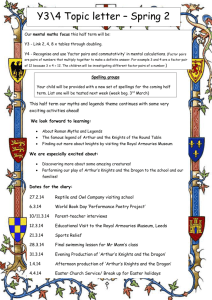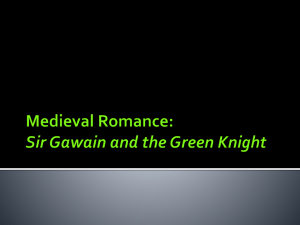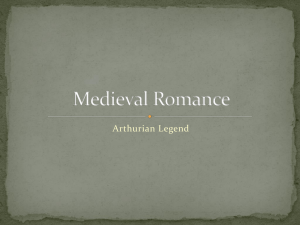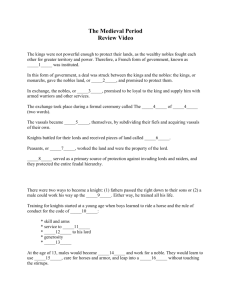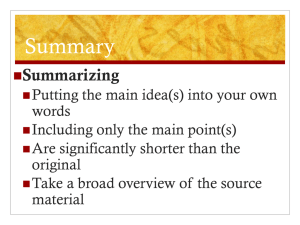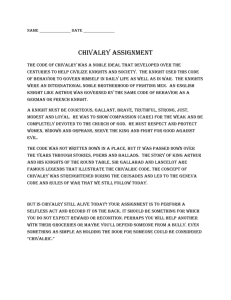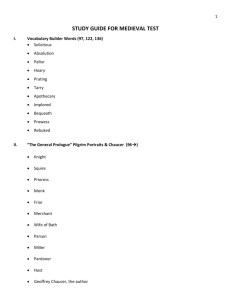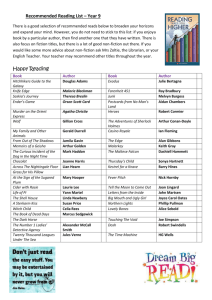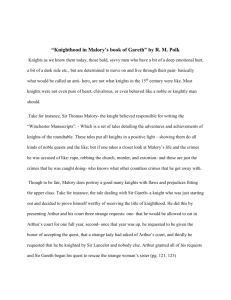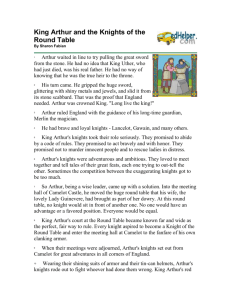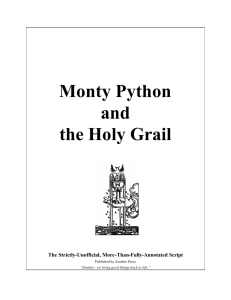King Arthur
advertisement
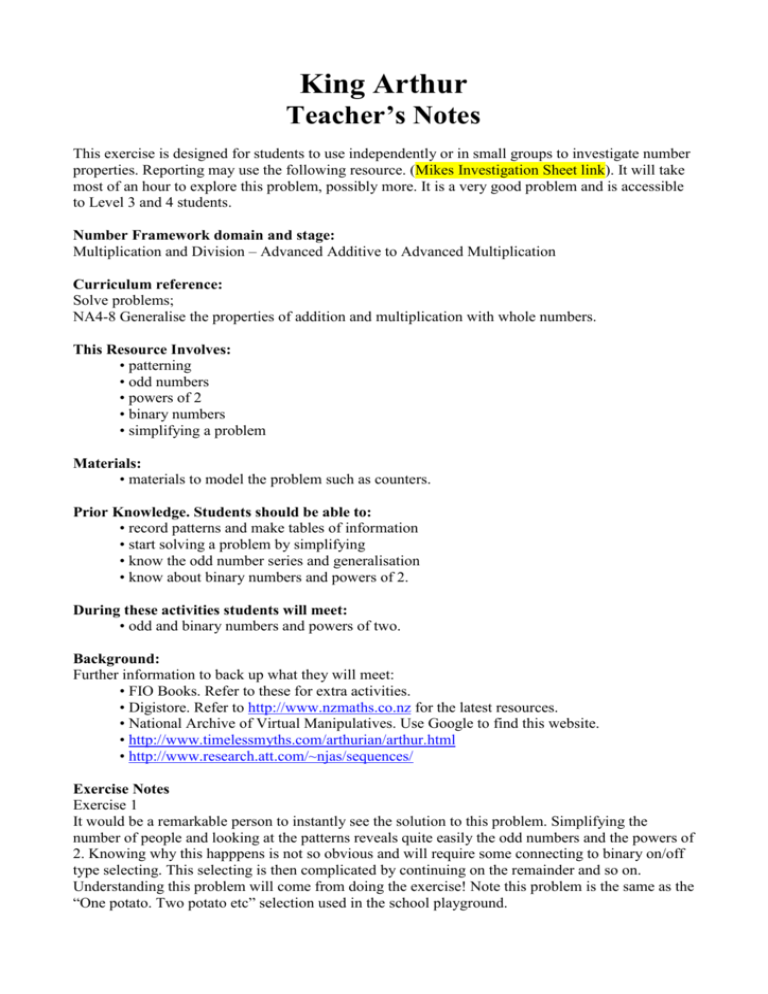
King Arthur Teacher’s Notes This exercise is designed for students to use independently or in small groups to investigate number properties. Reporting may use the following resource. (Mikes Investigation Sheet link). It will take most of an hour to explore this problem, possibly more. It is a very good problem and is accessible to Level 3 and 4 students. Number Framework domain and stage: Multiplication and Division – Advanced Additive to Advanced Multiplication Curriculum reference: Solve problems; NA4-8 Generalise the properties of addition and multiplication with whole numbers. This Resource Involves: • patterning • odd numbers • powers of 2 • binary numbers • simplifying a problem Materials: • materials to model the problem such as counters. Prior Knowledge. Students should be able to: • record patterns and make tables of information • start solving a problem by simplifying • know the odd number series and generalisation • know about binary numbers and powers of 2. During these activities students will meet: • odd and binary numbers and powers of two. Background: Further information to back up what they will meet: • FIO Books. Refer to these for extra activities. • Digistore. Refer to http://www.nzmaths.co.nz for the latest resources. • National Archive of Virtual Manipulatives. Use Google to find this website. • http://www.timelessmyths.com/arthurian/arthur.html • http://www.research.att.com/~njas/sequences/ Exercise Notes Exercise 1 It would be a remarkable person to instantly see the solution to this problem. Simplifying the number of people and looking at the patterns reveals quite easily the odd numbers and the powers of 2. Knowing why this happpens is not so obvious and will require some connecting to binary on/off type selecting. This selecting is then complicated by continuing on the remainder and so on. Understanding this problem will come from doing the exercise! Note this problem is the same as the “One potato. Two potato etc” selection used in the school playground. King Arthur AC We are investigating a mathematical problem We are developing problem solving thinking skills EA AA King Arthur AM King Arthur lived a long time ago. He was a very popular king in what is now Know as England. There are many excellent websites telling of his deeds. AP One story (that is certain to be false) is that he gathered his “Knights of the Round Table” and told them he would select a knight worthy of marrying his daughter. The selection process would be, he explained, starting with chair number 1 that he chose, he would say STAY then moving to chair number 2 he would say GO, and then STAY, GO, STAY, GO,.. until he had one knight left. That knight would marry his daughter and become wealthy, have many heirs and live happily every after. He told his Knights to be seated. There were 21 Knights of the round table and the knight in the 11th place was Sir Galahad, the one that King Arthur wanted to marry his daughter. He counted back 11 places from this knight and started the STAY and GO sequence eliminating all og the other knights. Some were pleased and some where a bit annoyed that Sir Galahad, who everyone knew, was King Arthurs favorite choice. How did King Arthur know where to start? 1 Task 1 Draw up a table with 21 knights and confirm using the selection process that Sir Galahad in chair 11 would be selected. Task 2 Investigate other numbers of knights and see if you can find the rule for knowing where to sit, (or not to sit!) Task 3 Find out some interesting information about King Arthur from the library or on the internet. Make up a poster and a 5 minute talk about King Arthur and what you have found out. Practice excercises with answers (.pdf for whole file, .doc for parts) Solving this problem may involve simplifying and looking at the patterns for 2, 3, 4, 5, 6 7, 8, 9+ people sitting around the table and figuring out who is chosen. Obviously the first time around the circle eliminates the even number postions for ever. The second time around every second odd number is eliminated for ever. This procedure continues and in a way the answer can be seen as oddest of all the odd numbers in the circle! Hidden within the problem is the mathematical intution that because we are jumping around the circle in twos this is fundamentally a power of two problem, or a binary problem depending on how you look at it. One way to find out the chosen person is to remove the highest power of two (why?) and use the remainder n to generate an odd number using the formaula 2n+1. For example if there are 11 people, subtract 8 (2x2x2) leaving 3, 2x3+1 =7 so the 7th person sitting in the circle will be chosen. A curious question is why when we have a power of two number of people is the answer always the first person. Google “King Arthur Problem” and do the problem!
